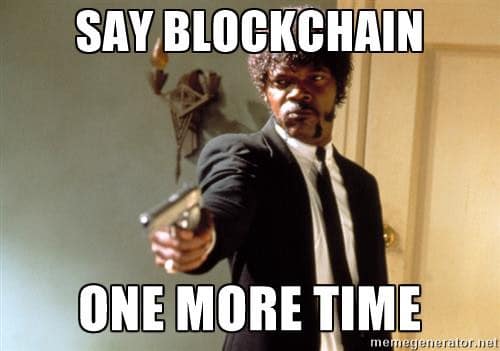Cryptocurrency White Papers 101
If you’re interested in the blockchain space, whether as an investor, businessperson, or developer, one thing you can’t avoid is white papers. Every week, there is a new blockchain or cryptocurrency white paper touting new technologies that will “revolutionize” the industry. In addition, many of the major projects in the industry, like Bitcoin and Ethereum, began with white papers.
As a result, white papers have come to be known as an essential part of creating a new blockchain project or cryptocurrency. Investors, businesspeople, and developers expect to see a document that explains what problem the project solves and how it does so.
Consequently, learning how to read a white paper is a critical task for anyone getting involved in crypto. As most investors and observers in the industry know, there are quite a few scams in the space. Moreover, many projects sound good, with the right buzzwords and marketing speak, but they’re not backed up by any follow-through, and they quickly fizzle out. In this article, we’ll take a look at how to spot a good white paper with a valid idea and technical chops to actually execute on the idea.
Introduction to White Papers
White papers are documents that explore a use case for a product or service. While most blockchain investors think of cryptocurrency white papers, they have a long history in technology and business generally.
Moreover, they’re not limited to technical applications, and there really aren’t any rules for what constitutes a white paper. Anyone can publish one. Ultimately, they’ve become as much about marketing as they are about explaining a problem and a solution. Savvy companies use white papers to establish themselves as experts in a domain, in the hopes that competitors in the industry will reference their “research.” However, white papers have no peer review and no limitations. It’s helpful to think of them just as “reports” or even “idea papers.”
The term “white paper” has developed a cachet around it that signals technical expertise. But I hope by now you realize that might not be the case. Just because it’s called a “white paper” doesn’t mean that it’s special or different from any other marketing document. Therefore, you would be wise to not always believe what you read and constantly question any white paper you come across.
That’s not to say that all white papers are garbage. For instance, Satoshi’s original vision for the Bitcoin protocol came in the form of a white paper. The next great blockchain platform will also likely have a white paper ahead of its working product. However, be wary. Scam coins and pointless projects can have white papers, too.
There are a couple key questions you should ask to determine the legitimacy of a cryptocurrency white paper:
1. What does this project do?
The first question should be fairly straightforward, but quite often you’ll find white papers are confusing. The combination of buzzwords, technical jargon, and made up names that you find in the typical cryptocurrency white paper is frequently difficult to decipher.
If you’re not sure what the project does, there are two likely conclusions. Either the project is so advanced that you’ll need more knowledge before you understand it, or the project doesn’t really do anything.
In either of those cases you probably shouldn’t invest in the project yet. No matter what other people say or what you’re reading on Twitter, Reddit, or the forums, if you don’t understand a project, don’t invest in it.
2. How does it work?
After you find out what a project aims to accomplish, the next question is “How?”
A good cryptocurrency white paper should explain how the technology will work, and the best white papers do so with varying levels of complexity and technical knowledge required. This is where the original Bitcoin white paper really shines. It is among the most readable and understandable blockchain white papers ever written. It’s also not very long, in contrast to many modern white papers. If you’ve never read it, the Bitcoin white paper is a good place to start. It will give you a good baseline for what a great cryptocurrency white paper looks like.

By the end of the white paper if you can’t articulate what problem the project solves and how it does so, then the white paper did a poor job. In fact, a well-articulated white paper is a sign of a well-thought out project. On the other hand, the opposite is also true.
3. Why do we need this project?
I could build a blockchain project that specializes in underwater fire protection, but would we really need it?
Obviously, that’s not a serious project. Nevertheless, it does raise an interesting point. It’s critical that you examine the project in the context of the real world. Who will actually use this product, and why is this solution better than anything they currently have? If the cryptocurrency white paper gives a solid answer to who needs this project and why they need it, then you’re onto a good idea.
However, before you invest your time or money in the project, do some research to see if someone else is already doing the same thing better. There are hundreds of blockchain projects out there, and perhaps a similar project already exists.
4. Why do this on the blockchain?
Not every project needs to be built on the blockchain. There, I said it.

Our current internet is a powerful tool, and many of the blockchain ICOs we’re seeing should really just be web apps. Moreover, a lot of ordinary businesses are trying to capitalize on the blockchain trend to get access to capital.
That said, there’s nothing wrong with launching a company with an ICO for the fundraising model. However, many startups try to sell their company as a novel use of blockchain technology when it’s really just a regular business.
The best white papers will be honest about why their solution needs the blockchain. Many projects freely admit that they’ll only be using the blockchain for token generation and some smart contracts management, and that’s perfectly okay. But if a startup claims to have some novel idea for blockchain-based carwashes or something like that, beware.
Go with Your Gut

Of course, you’ll also want to do due diligence on the team members, token allocation, and other key information contained in the white paper. We’ve seen examples of companies plagiarizing or falsifying their white papers, so do some fact checking and background research. Don’t take these documents at face value.
Ultimately, reading a cryptocurrency white paper is about knowing what to look for and then trusting your gut. White papers come from companies that haven’t even launched yet, so there are bound to be a lot of unknowns. If you decide to invest in a project, then follow sound investment philosophy and don’t invest more than you can afford to lose. Even the best white paper doesn’t mean a project will succeed, but a bad white paper can expose a project that’s doomed to fail.
The post How to Read a Cryptocurrency White Paper appeared first on CoinCentral.

Coincentral.com is author of this content, TheBitcoinNews.com is is not responsible for the content of external sites.
Our Social Networks: Facebook Instagram Pinterest Reddit Telegram Twitter Youtube










